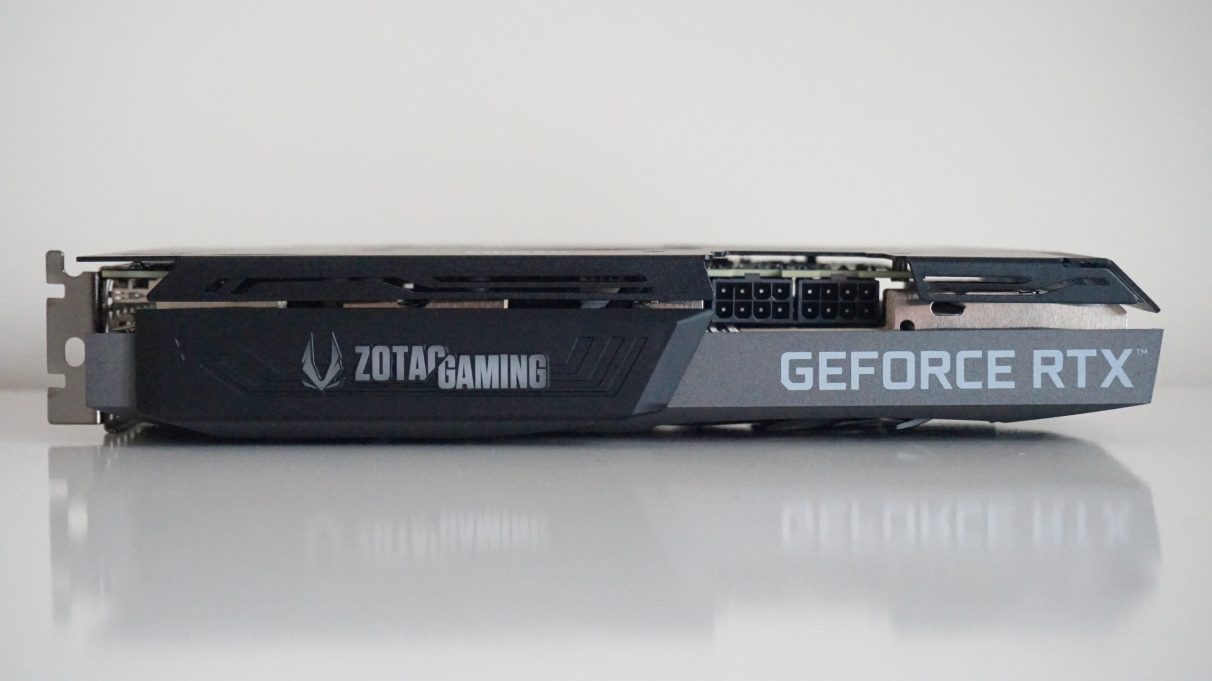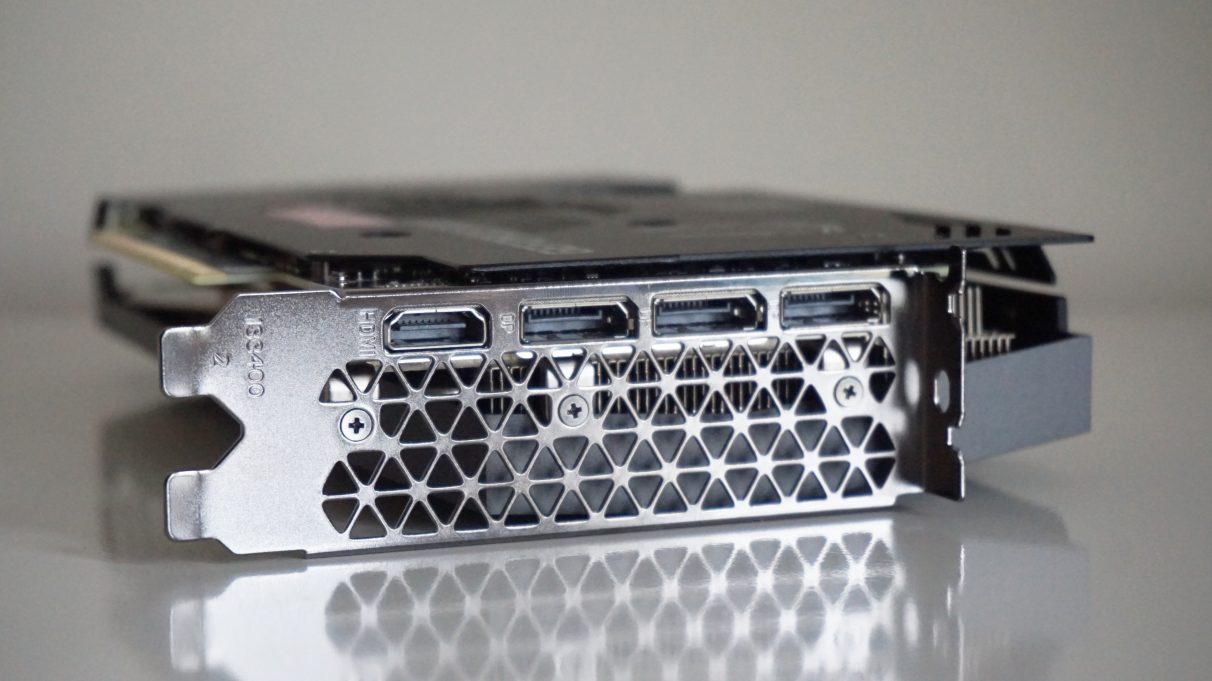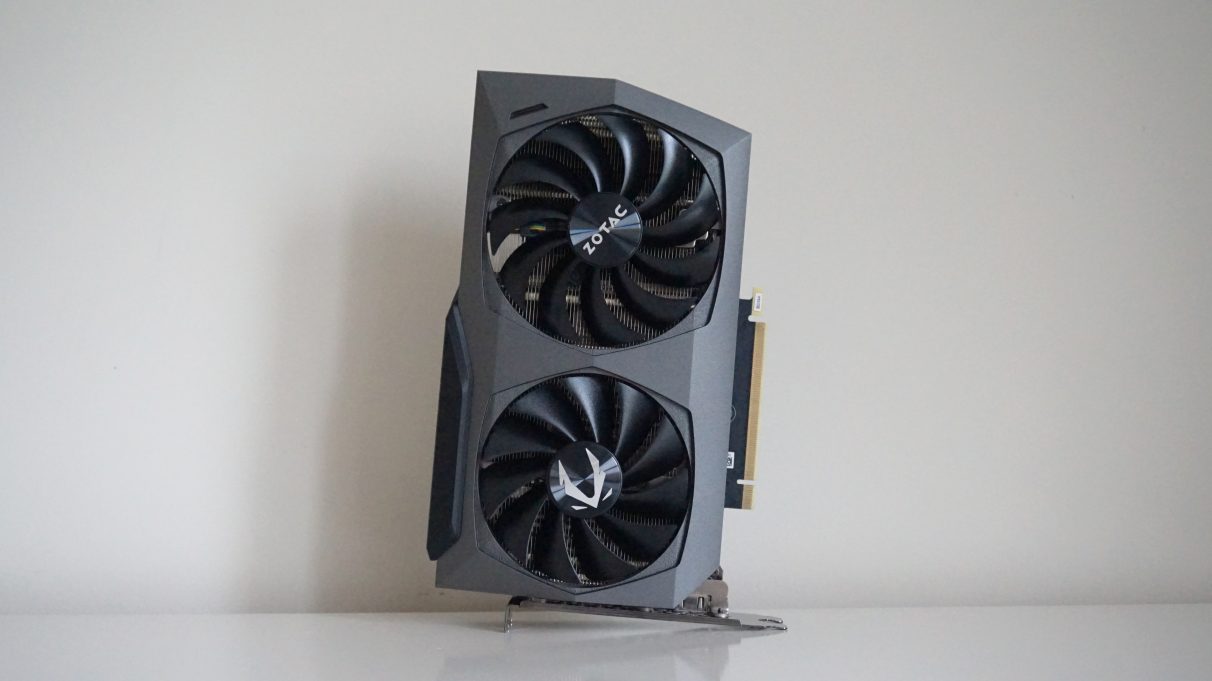It’s an eyebrow raising feat, to be sure, and I bet there are a fair few RTX 2080 Ti owners out there who are biting their knuckles in remorse right now as a result. It’s also probably the most compelling upgrade option out of all Nvidia’s RTX 30 cards released so far, too. Its 1080p and 1440p performance are well into the 80s and 90fps zone on max settings in today’s big blockbuster games, and it’s also perfectly equipped for Medium to High gaming at 4K and ultrawide, too. Unless you’re adamant about playing at Ultra 4K with the RTX 3080, the RTX 3070 offers more than enough power for everything else. The only question remaining is whether it’s a better buy than AMD’s Radeon RX 6800, which is also meant to offer faster than RTX 2080 Ti speeds for a similar price. It’s a question that can’t be fully answered until the RX 6800 comes out on November 18th, by which time the RTX 3070 is likely to be long gone from shop shelves given the ongoing shortages facing its other RTX siblings. It’s a catch-22, although considering what we now know about the RX 6800 (and assuming the benchmarks AMD revealed yesterday are correct), it looks like it will offer quite a decent boost over the RTX 2080 Ti at 4K, and by extension the RTX 3070. The RTX 3070, you see, is more or less on par with the RTX 2080 Ti rather than substantially faster. As we’ll soon see in my benchmarks below, its 4K speeds are pretty much nigh-on identical, or just a handful of frames faster. In most cases, the RTX 3070 only exceeds it by 2-3fps. At 1440p, it’s a very similar picture. Don’t get me wrong. This is still highly impressive performance considering the cost, but there’s also a strong chance AMD may have the upper hand come the launch of the RX 6800. To test the RTX 3070, I’ve been sent Zotac’s GeForce RTX 3070 Twin Edge GPU, a £530 card (US pricing TBC) card that goes for a little more than the £469 price of the Nvidia Founders Edition but it one of the cheaper third party models currently available for it. As its name suggests, this is a dual-fan graphics card so it should actually fit in the vast majority of cases without issue - which is something I cannot say is true of all RTX 3080 and RTX 3090 cards. It also has a lower PSU requirement than the rest of its RTX 30 siblings - just 650W, rather than 750W. Combine that with the fact it only needs two 8-pin power connectors rather than three, and this particular RTX 3070 should be dead easy as a slot-in, no-fuss upgrade. Yes, the slightly recessed location of said power connectors can be a little fiddly to connect up when you first install it, but it’s definitely a lot easier than having to potentially buy and / or fit a whole new power supply like I did for the RTX 3080 and RTX 3090 because I didn’t have the necessary number of power cables. You’re not missing out on any fancy double-sided fan design, either, as even Nvidia’s Founders Edition of the RTX 3070 only has fans on one side this time - unlike its more powerful RTX 30 siblings. Instead, Nvidia have opted for a large vent on the RTX 3070 Founders Edition, and while the Zotac has vents in a couple of locations, they’re much smaller and more discrete than Nvidia’s RTX 3070 FE model. Alas, I wasn’t sent an FE card to test to see how their heat and noise levels compare to other third party cards, but Zotac’s Twin Edge still runs relatively quietly regardless, albeit not quite as whisper-like as the Asus and MSI RTX 3080 cards I’ve tested.
Zotac GeForce RTX 3070 Twin Edge 4K benchmarks
Still, as a showcase for what’s possible at the cheaper end of the RTX 3070 pool, the Zotac Twin Edge certainly puts in a very impressive performance across all resolutions. Starting at 4K, the RTX 3070 offers pretty much identical performance here to the RTX 2080 Ti before it. In Assassin’s Creed Odyssey, for example, the RTX 3070 managed a very playable average of 51fps on Ultra High at 4K, matching the RTX 2080 Ti’s result with those settings and offering a substantial jump up from the RTX 2070 Super’s average of 40fps. In truth, the RTX 3070 is most comfortable on High settings in Odyssey, averaging 67fps overall, but that’s still quite a bit smoother than the 2070 Super’s 52fps average here, and more than double what you’ll get on a GTX 1070, too, which averages just 33fps on High at 4K. You’re not getting that much more by opting for the more powerful RTX 3080, either. While the RTX 3080 can just about manage 62fps on Ultra High 4K in Odyssey, you’re only looking at an extra 7fps when you drop it back down to High. The RTX 3080 makes its presence felt a bit more in games such as Monster Hunter: World and Total War: Three Kingdoms, admittedly, but you’re still only looking at a difference of a single Quality setting in most cases, if that. In Monster Hunter, for instance, the RTX 3070 managed a steady average of 45fps on Highest at 4K, which once again goes toe-to-toe with the RTX 2080 Ti and offers big gains over both the RTX 2070 Super’s 31fps average and the literally unplayable speeds on the GTX 1070. The RTX 3080 bumps this up to a smoother 59fps, but when the RTX 3070 can also produce a very smooth 65fps when you enable DLSS, the RTX 3080’s gains become nil and void. As for Total War: Three Kingdoms, the RTX 3070 doesn’t have the benefit of Nvidia’s DLSS tech here, so you’ll likely have to settle for playing at Medium settings at 4K (averaging 77fps) if you find High’s average of 50fps isn’t quite doing it for you. Here, the RTX 3080’s extra power does help to push you into higher quality settings, where you’ll see smoother frame rates of 68fps on High and over 100fps on Medium, but I’m not sure that’s worth spending an extra £200 / $200 on. In any case, the RTX 3070 is still considerably faster than the RTX 2070 Super ever was at 4K here, which only just about managed an average of 59fps on Medium, while the GTX 1070 barely scraped by with 37fps. Elsewhere, the RTX 3070 still coped extremely well at 4K, even when it came to other tough ray tracing games. In Metro Exodus, for example, the RTX 3070 produced a smooth 59fps average on High at 4K, and a still very playable 50fps with Ultra ray tracing and DLSS enabled (and 56fps with High ray tracing and DLSS). Sure, the RTX 3080 will bump both of those scores up by another 18-20fps or so, but in terms of generation-on-generation improvements, these kinds of speeds simply weren’t possible on the RTX 2070 Super, which barely averaged 40fps without the extra burden of ray tracing thrown in. It was a similar picture in Shadow Of The Tomb Raider. Here, the RTX 3070 managed an average of 62fps on Highest at 4K with its regular SMAA anti-aliasing option available (which is exactly the same as my RTX 2080 Ti result), as well as a very agreeable 52fps average with Ultra ray tracing and DLSS switched on. The RTX 2070 Super, meanwhile, is still scrabbling around the 34fps mark with these settings, and the GTX 1070 isn’t even in the same ballpark once you take ray tracing out of the equation. Final Fantasy XV wasn’t playable at 4K on the GTX 1070, either, but here the RTX 3070 can sail through it with a very smooth average of 54fps on Highest with all of the extra Nvidia effects turned off, which is much better than the choppy average of 40fps you’ll get with the RTX 2070 Super. Things get a bit hairy when you start adding in TurfEffects and Hairworks, all told, but whack on DLSS and you’ll be back up to frame rates in the high 50s in no time - which once again isn’t actually that far off from the low 60s speeds you’ll get with the RTX 3080 at the same settings. In short, unless you’re desperate to play all of today’s biggest and best games on max settings at 4K, there’s simply no need to shell out the extra cash on the RTX 3080. Instead, the RTX 3070 provides plenty of power for a decent 4K - and by extension, ultrawide - experience, and from some very early benchmarks I’ve been doing in Watch Dogs Legion, it will likely be fine for most of tomorrow’s big games, too, thanks to 60fps speeds on 4K High sans ray tracing and DLSS.
Zotac GeForce RTX 3070 Twin Edge 1440p benchmarks
Really, though, the RTX 3070’s biggest strengths lie at 2560x1440. With its 80-90fps speeds on max settings, it sets a new benchmark for flawless 1440p gaming in this particular price range, making it an ideal companion for the increasing number of high refresh rate monitors available at this resolution. Indeed, thanks to those already high frame rate numbers, the difference between the RTX 3070 and RTX 3080 is much less pronounced here than it was at 4K - unless of course you’re the kind of person who can legitimately tell the difference between 73fps and 80fps, in which case your eyes are clearly superior to mine. But that’s the kind of difference we’re talking about here, as those were the respective scores I recorded for both cards when I re-ran Assassin’s Creed Odyssey’s internal benchmark on Ultra High at 1440p. The RTX 3070 came in with the former, while the RTX 3080 added another whole 7fps to proceedings. There was a similar gap on Very High, too, with the RTX 3080 coming in just 6fps in front of its RTX 3070 sibling, finishing with 91fps vs 85fps. Admittedly, the jump between the RTX 3070 and the RTX 2070 Super is also going to be smaller at this resolution, as the latter was already a highly capable card for 1440p gaming, hitting at least 60fps+ on max settings in all of the games mentioned above. If you’re coming from a GTX 1070, however, which can barely muster much more than 30-40fps on max settings at 1440p in those same games, the difference is palpable - and once again, offers a tangible upgrade for anyone looking to get more out of their 1440p monitor. I’ll be doing a separate comparison article comparing the GTX 1070, RTX 2070 Super and RTX 3070’s respective 1440p scores very soon, but the numbers speak for themselves, really. Whereas the best benchmark result I have for the GTX 1070 never reaches beyond 45fps on max settings at 1440p, the RTX 3070 pretty much doubles that figure and then some. For instance, it managed a very agreeable 83fps average in Monster Hunter: World on Highest, as well as 61fps with all of Final Fantasy XV’s extra bells and whistles enabled on Highest (not to mention an average of 92fps with them all turned off). The RTX 3070 also made mincemeat of Total War: Three Kingdoms on Ultra, averaging 71fps overall, and I barely felt the need to switch on DLSS when I tested it with Metro Exodus, too, as it averaged 81fps on Ultra without Ultra ray tracing switched on and 57fps with. The same goes for Shadow Of The Tomb Raider, where it averaged 83fps on Highest and 51fps with Ultra ray tracing through in. Even older games such as The Witcher III still give the GTX 1070 trouble on Ultra at 1440p, averaging just 43fps according to my testing, but the RTX 3070 can finally do Geralt justice with a super smooth average of 102fps. 102fps! That should be more than enough for the game’s eventual ray tracing update, too, and indeed any other retrospective ray tracing updates we might see as developers look to stuff the holes in the Xbox Series X and PS5’s rather sparse launch line-up.
Should I buy an RTX 3070?
Needless to say, the RTX 3070 is also very well equipped for superb 1080p performance, too, offering at least 100fps on max settings in nearly every game in my benchmarking suite. However, there will no doubt be cheaper graphics cards on the way that are almost, if not just as nippy at this resolution as the RTX 3070 - such as the inevitable RTX 3060, for example - so if you’re looking to get a card for high refresh rate gaming at 1920x1080, then I’d strongly recommend waiting for those lower-end GPUs before spending upwards of £500 / $500 on something like this.
Similarly, AMD haven’t talked about any kind of competing DLSS technology, either, which may well seal the deal for a lot of would-be 1440p and 4K gamers out there who want to get the best ray tracing speeds possible. It’s possible that AMD’s implementation of Microsoft’s DirectX 12 Ultimate tech has something akin to DLSS built-in, but we won’t know for sure until I’m able start testing it out for myself - which will be some weeks away yet given the RX 6800 doesn’t launch until November 18th. Then again, with AMD hardware powering both of the next-gen consoles, it’s equally possible that DLSS will become an increasingly niche feature in future games (a bit like yer Nvidia HairWorks, for example) if everyone’s busy making games to comply with DirectX 12 Ultimate. We just don’t know.
Still, as we’ve seen from my benchmark tests, the RTX 3070 is still a great graphics card in its own right. Prices will likely be a bit cheaper than its AMD rival (if stock levels don’t immediately disappear, of course), and its lower TDP figure of 220W vs AMD’s 250W make it slightly more energy efficient, too. You’ll probably be happy with either.
In all likelihood, both the RTX 3070 and RX 6800 will be fine choices for 1440p and 4K gaming regardless of what happens with DLSS, and you’ll probably be happy with either of them. At £469 / $499, Nvidia has the advantage of being slightly cheaper than the RX 6800’s starting price of $579 - although how long this will last for if it continues to suffer similar stock shortages as the RTX 3080 and RTX 3090 remains to be seen - and it also has a slightly lower TDP of 220W versus the RX 6800’s 250W, arguably making it a better fit for smaller builds. The RX 6800 does have double the amount of GDDR6 memory, admittedly, coming in with a massive 16GB versus the RTX 3070’s 8GB, but as we’ve just seen, it certainly doesn’t seem to be hindering the RTX 3070’s performance in any significant way when it comes to those all-important gaming speeds.
In short, the RTX 3070 is almost certainly going to be a very safe bet for the foreseeable future if you want to jump in early before stock levels completely disappear, but if you can afford to hang on for a bit, then I think AMD could bring something very interesting indeed to the 1440p and 4K gaming table - especially with the promise of extra performance boosts from its Smart Access Memory tech if you pair it with one of their Ryzen 5000 processors. It’s an exciting time, to be sure, even if it may be some time before we get the full picture of what the best upgrades are. In the meantime, the RTX 3070 is a fine graphics card in its own right, and an excellent upgrade option for current GTX 1070 owners.





